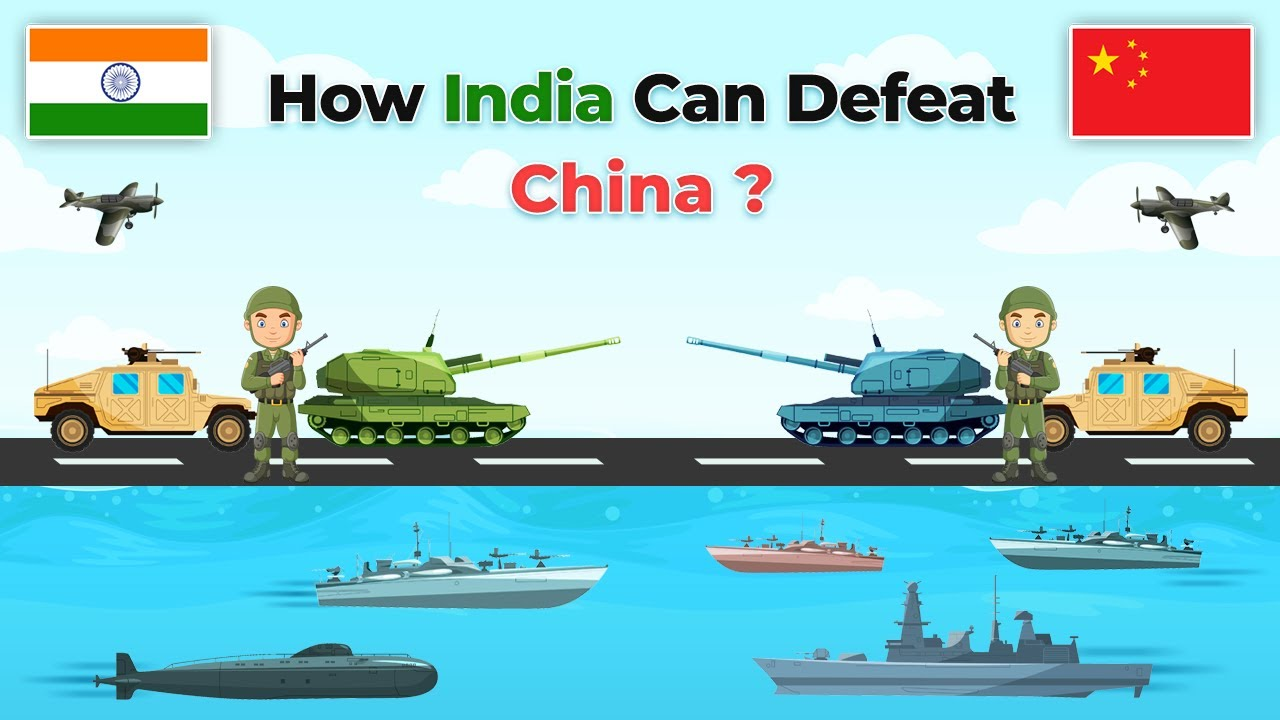image source youtube
The Geopolitical Dynamics Between India and China
In recent years, the world has witnessed heightened tensions between India and China, two of the world's most populous and influential nations. This section delves into the geopolitical dynamics and historical context that have shaped their relationship.
The India-China border dispute, which has its roots in the 1962 Sino-Indian war, continues to be a source of contention. With both countries claiming territories that the other considers its own, the situation remains volatile. We'll explore how these ongoing disputes have affected the overall dynamics between these two nations.
Military Capabilities of India and China
To assess the possibility of India defeating China in a full-fledged war, it is essential to understand the military capabilities of both countries. In this section, we'll break down their respective armed forces, including manpower, weaponry, and technology.
India's military strength is formidable, with a large standing army, a robust air force, and a capable navy. However, China boasts the world's largest standing army, and its military modernization efforts have been substantial. We'll provide an in-depth analysis of their capabilities.
Strategic Alliances and International Implications
In today's interconnected world, no conflict remains isolated. International alliances and implications often play a crucial role in determining the outcome of a conflict. Here, we'll explore the strategic partnerships and alliances that both India and China have established.
India has nurtured relationships with countries like the United States, Japan, and Australia, while China has alliances with Pakistan and Russia. How these alliances could influence the dynamics of a potential war will be discussed, shedding light on the broader context.
Nuclear Deterrence and the Risk of Escalation
Nuclear weapons have changed the nature of warfare, introducing an element of mutually assured destruction. Both India and China possess nuclear arsenals, which raises the stakes in any potential conflict. In this section, we'll analyze the role of nuclear deterrence and the risks associated with escalation.
We'll discuss the doctrine of "No First Use" (NFU), which India has adopted, and China's nuclear strategy. Understanding these policies is vital in assessing the likelihood of a full-fledged war and its potential consequences.
Summary
While the idea of India defeating China in a full-fledged war is a complex and multifaceted topic, it is essential to consider the historical context, military capabilities, international alliances, and the role of nuclear deterrence. Any such conflict would have far-reaching consequences, not only for the two nations involved but for the entire world.
In this article, we've explored the geopolitical dynamics and historical background of the India-China relationship, dissected their military strengths and weaknesses, discussed strategic alliances, and delved into the implications of nuclear deterrence. The path to victory in a full-scale war is uncertain, and it's in the interest of both nations, and indeed the world, to prioritize peaceful resolution and diplomatic dialogue over armed conflict.

